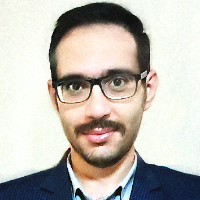A Critical Study of Walter Benjamin’s Theory on the Declining Aura of the Visual Art in the Age of Mechanical Reproduction
Author(s):
Article Type:
Research/Original Article (دارای رتبه معتبر)
Abstract:
This paper deals with one of the most influential theoretical works in the field of philosophy and the ontology of the arts in the twentieth century. The term Aura was used by the German author Walter Benjamin in his important 1936 essay "The work of art in the age of mechanical reproduction". Benjamin argued that ‘even the most perfect reproduction of a work of art is lacking in one element: Its presence in time and space, its unique existence at the place where it happens to be.’ He referred to this unique cultural context i.e. ‘its presence in time and space’ as its ‘aura’. Despite being widely accepted, the ideas of Benjamin in his well-known essay "The work of art…" are controversial. The most significant issue raised by Benjamin is the conceptualization of the Aura of an artwork and its decline with the help of mechanical reproduction of the works. However, the critical question is, are Benjamin’s arguments about the Aura and its decline acceptable in our day? What are the reasons for and against Benjamin’s thesis? Our purpose in this study is to critically examine the theory of Benjamin’s declining Aura, a theory that has been more widely documented in Persian sources than criticized. Given that the present paper is solely responsible for Benjamin’s views in his aforementioned essay, the research method is based on critical reading and analysis of the text, scrutiny of his logical arguments, and support from previous research by foreign scholars about the subject. Thus, library materials and resources, especially those written in English about Benjamin, form the basis of our qualitative data. In the final analysis, for several reasons, it can be concluded that the theorist of the declining Aura, although well aware of the importance of the advent of mechanical reproduction, has made serious mistakes in assessing its consequences. In our opinion, the Aura of contemporary art has not only disappeared but its dimensions and scope have become increasingly potent. Today’s Aura is not just a matter of great artistic masterpieces, but of the concept of Art itself, and of the creeds and rituals that have been shaped by late Capitalism and the economics of contemporary art. Who can deny that the Mona Lisa painting is still, and perhaps more than before, a powerful attraction that draws everyone to the Louvre Museum? Particularly today, signposts are erected throughout the museum to show the way to the curious audience, who line up to watch a small artwork for a few moments from a distance, behind a bulletproof glass case. The aura has not faded and will probably never diminish. Art is inseparable from its sacred origins. The aura, which always holds the qualities of ritual sanctity, takes on a real form in the distinction between the original and its reproductions. Therefore, there is still an aura at work today. The aesthetic judgments of the upper classes of society, which establish the cultural institution of art in the form of museums and art galleries, by framing and placing the work of art in the museum, throw a veil around it. While separating artworks from ritual origins, museums create a new ‘aura’ for art by classifying works in a specific place and time in an environment separated from the outside world. Thus, in this era, art is transferred from its original setting with religious authorities to the political-economic authorities of capitalism, with a more or less similar structure: from the church to the museum. Now the politics of the upper classes manage the affairs of the art world and shape the understanding of society. Today, the abundance of images promoted by digital mass media recreates the aura in a strange way for individuals in distant places. Mass reproduction has actually enhanced the aura in an unexpected way and multiplied the monetary value of the work up to a distant and priceless status. Last but not least is that aura would be accurately analyzed when it is considered a declaration regarding the subject of perception and not its object. If we pay attention to the fact that the aura is formed in the eyes of the beholder and does not belong to the work itself, and if we pay attention to the fact that the perception mechanisms of the beholder, even in the post-modern times, has not undergone a dramatic transformation (that is, the cult of art has replaced the former magical or religious rituals), then we will speak more cautiously about the declining of the aura.
Keywords:
Language:
Persian
Published:
Journal of Rahpooye honar, Volume:6 Issue: 3, 2023
Pages:
5 to 13
https://magiran.com/p2659105
مقالات دیگری از این نویسنده (گان)
-
Description of some Safavid era musicians in Golestan Honar By Qazi Mir Ahmad Menshi Qomi
Journal of Art and Aesthetics Studies, -
A Survey on the Music Treatise Tuhfat al-Sorur by Darvish-Ali Changi
*, Amir Hossein Davoodvandi
Journal of Interdisciplinary Studies in Iranian Architecture,



